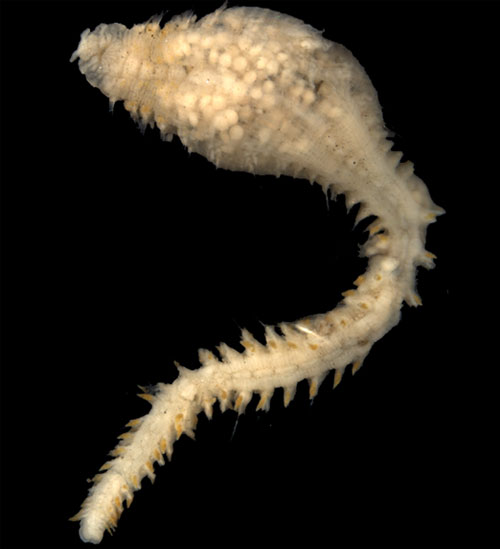
Kontaktpersoner
Børge Holte
forsker
77 60 97 53
916 30 856
Beate Hoddevik Sunnset
kommunikasjonsrådgiver
55 23 85 16
908 21 630

Published: 23.01.2014 Updated: 16.06.2022
Scalibregma hanseni is named after Gerhard H. Armauer Hansen, known as the doctor who discovered the leprosy bacterium. Although he was a skilled zoologist in other fields. He had a period of work at Bergen Museum, where he conducted research on polychaetes. Armauer Hansen was indeed a pioneer in research on polychaetes in Norway.

Scalibregma hanseni (photo: Katrine Kongshavn/the University Museum in Bergen).
The polychaete was first observed three years ago, but it was only after being found in the MAREANO samples that the researchers got a specimen of sufficient quality to identify it as a new species and complete its scientific description.
When a new species is scientifically identified and described, it forms the “type-organism” that represents the original animal from which the description is based. This "type”-animal is stored at a museum as a future reference and as a documentation of the description. The type-material for Scalibregma hanseni is deposited at the University Museum of Bergen, where all the MAREANO-material is stored for any future use.
Efforts to identify Scalibregma hanseni were carried out by the University Museum, the University of Science and Technology (NTNU), Trondheim, the University of Bergen and the Norwegian Institute for Water Research (NIVA).
Bakken T, Oug E, Kongsrud JA. 2014. Occurrence and distribution of Pseudoscalibregma and Scalibregma (Annelida, Scalibregmatidae) in the deep Nordic Seas, with the description of Scalibregma hanseni n. sp. Zootaxa 3753: 101-117. DOI: 10.11646/zootaxa.3753.2.1